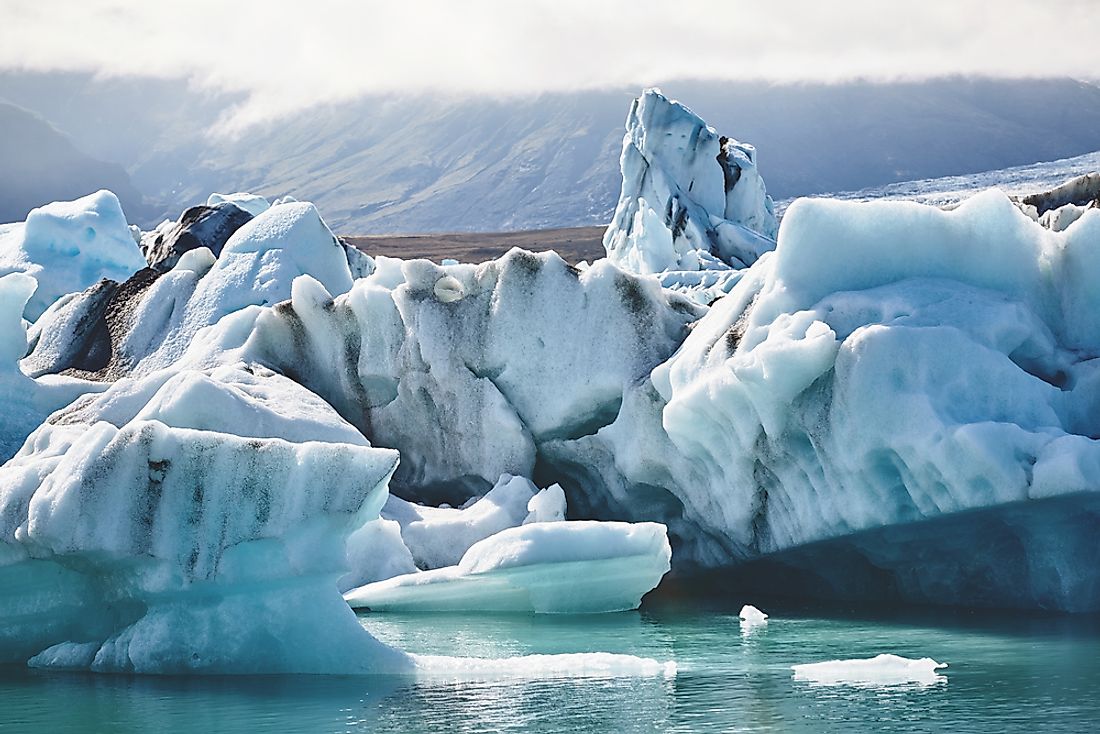How Much Of The Surface Of The Earth Is Covered By Glaciers?

What Is A Glacier?
A glacier is a large mass of ice that forms as a result of hundreds of years of snowfall that has gone unmelted over time. These large bodies of ice are known to move at a constant, yet extremely slow speed, propelled by the force of their own weight. Glaciers can be found all over the world, primarily in mountaintops at high elevations and in the northern and southern polar regions. Ice that forms over bodies of water is not considered to be a glacier. Scientists have shown that glaciers play an important role in the global climate. This article takes a closer look at just how much of the surface of the earth is covered by glaciers.
How Much Of The Earth Is Covered By Glaciers?
Researchers estimate that approximately 10% of the land on earth is covered by glaciers. This percentage represents an area of around 5.751 million square miles. The sliding movement of glaciers across the surface of the earth causes the rocks and land underneath to erode, resulting in u-shaped valleys over time. This erosion occurs because the glacier picks up smaller pieces of rock as it moves along the land. These pieces of rock are dragged over more solid rock, effectively grinding away at the surface and leaving behind cracks. Water collects in these cracks, freezes, and expands, causing the cracks to grow wider and break away.
Hundreds of millions of years ago, nearly all of the surface of earth was covered in glaciers, which researchers have been able to identify by making observations and measurements of land erosion as well as the location and direction of the previously mentioned striations. Geologists have reported that, during recent geological history, approximately 30% of the land on earth was covered by glaciers. This era is considered the most active period of the last ice age. Today, glaciers hold the largest freshwater reserves on earth, storing around 75% of all the freshwater on earth. Scientists predict that if all of this ice melted, the oceans and seas around the world would rise by around 230 feet in elevation. This sea rise would have a devastating impact on coastal habitats and human settlements.
Where Are Most Of The Glaciers In The World?
Although glaciers can be found on every continent in the world, the vast majority are concentrated in Antarctica and Greenland, given the large area of these territories. The large coverage reported in both of these locations is primarily due to the low-lying snow line levels here. In Antarctica, for example, the snow line is right at sea level, which exposes more of the continent to snow and ice and makes it more susceptible to glacier development. Geologists report that approximately 98% of this continent is covered in glacial ice. In fact, the largest glacier in the world is located here, known as the Lambert-Fisher Glacier. This glacier measures 250 miles in length and 60 miles in width. Additionally, around 75% of Greenland is covered by glaciers. The smallest glacial area in the world is located in New Guinea, where only 1.16 square miles are covered by glaciers.











